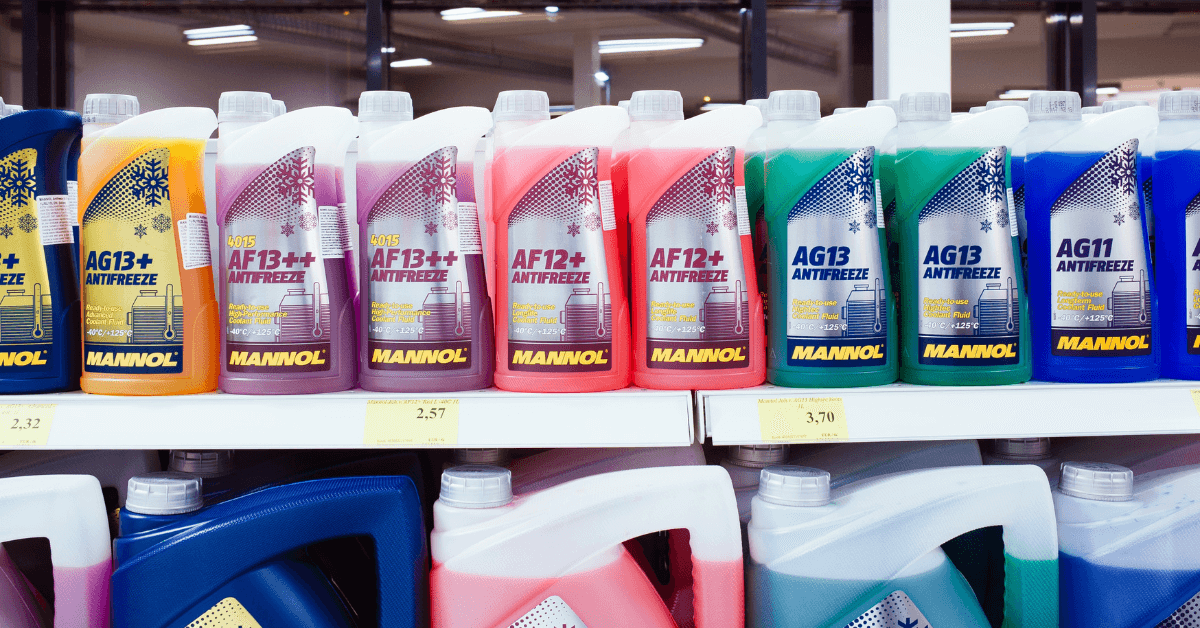As an outdoor enthusiast, there’s nothing quite like the freedom and adventure of hitting the open road in your RV. Whether you’re exploring national parks or chasing the sunshine, your RV is your home away from home. And just like any home, it’s important to take care of it and ensure everything is functioning properly – especially when it comes to RV antifreeze.
RV antifreeze is an essential component of your RV’s plumbing system. It protects your pipes from freezing during colder temperatures, preventing costly and inconvenient damage. However, as with any liquid, there’s always a concern about bacteria growth. After all, bacteria can grow almost anywhere, right? But can bacteria really grow in RV antifreeze?
Below, we’ll explore this question in-depth and provide you with the information you need to take care of your RV and ensure that your antifreeze is safe to use. So sit back, relax, and let’s dive in!
Can bacteria grow in RV antifreeze?
As an outdoor enthusiast, you’re likely familiar with the importance of RV antifreeze. But can bacteria actually grow in antifreeze, and if so, what are the risks?
First, let’s talk about what antifreeze is and how it works. RV antifreeze, also known as propylene glycol antifreeze, is a type of liquid that is added to the plumbing system of an RV to protect against freezing temperatures. Antifreeze is designed to lower the freezing point of water, so that even in very cold temperatures, the water in the pipes won’t freeze and cause damage.
Now, let’s talk about bacteria. Bacteria are microorganisms that can grow in a wide range of environments, from soil to water to the human body. However, for bacteria to grow, they need a few key things: nutrients, moisture, and warmth. So, can these conditions be met in RV antifreeze?
The good news is that RV antifreeze is generally not a hospitable environment for bacteria to grow. This is because antifreeze is designed to be very low in nutrients, which means that there isn’t much for bacteria to feed on. Additionally, antifreeze has a high concentration of chemicals, which makes it difficult for bacteria to survive.
In fact, many manufacturers of RV antifreeze add biocides or other chemicals to their products to specifically prevent the growth of bacteria and other microorganisms. These additives work by killing any bacteria that may be present in the antifreeze or preventing it from growing in the first place.
So, while it is technically possible for bacteria to grow in RV antifreeze under the right conditions, the likelihood of this happening is quite low. As long as you store your antifreeze properly and use it according to the manufacturer’s instructions, you shouldn’t have to worry about bacteria growth.
In the next section, we’ll discuss some of the factors that can contribute to bacteria growth in RV antifreeze, and how to prevent it from happening.
Related: Antifreeze 101: How Do You Use RV Plumbing Antifreeze?
Factors that can contribute to bacteria growth in RV antifreeze
While the likelihood of bacteria growth in RV antifreeze is low, there are certain factors that can increase the risk. Here are some of the most common factors to be aware of:
1. Contamination
One of the biggest risk factors for bacteria growth in RV antifreeze is contamination. If your antifreeze becomes contaminated with dirt, debris, or other microorganisms, it can provide a hospitable environment for bacteria to grow. To prevent contamination, make sure to always use clean tools and containers when handling your antifreeze.
2. Temperature
While antifreeze is designed to protect against freezing temperatures, it can also be vulnerable to high temperatures. If your RV is stored in a hot environment, or if your antifreeze is exposed to high temperatures during transport, it can become more hospitable to bacteria growth.
3. Age
Over time, RV antifreeze can become less effective and more susceptible to bacteria growth. This is because the chemicals in the antifreeze break down over time, which can reduce its ability to prevent bacteria growth. To avoid this, make sure to replace your antifreeze regularly according to the manufacturer’s instructions.
4. Improper storage
Proper storage is essential for maintaining the effectiveness of your RV antifreeze. If your antifreeze is stored in a damp or humid environment, or if it is exposed to sunlight or other sources of UV radiation, it can become more vulnerable to bacteria growth.
Next, we’ll discuss some of the risks associated with bacteria growth in RV antifreeze and how to avoid them.
How to prevent bacteria growth in RV antifreeze

Preventing bacteria growth in your RV antifreeze is essential for keeping your RV’s plumbing system healthy and preventing the spread of harmful bacteria. Here are some steps you can take to prevent bacteria growth in your RV antifreeze:
1. Use a high-quality antifreeze
Using a high-quality antifreeze can go a long way in preventing bacteria growth. Look for antifreeze that contains a high concentration of propylene glycol, which is a natural antimicrobial agent. This will help to kill off any bacteria that may be present in your RV’s plumbing system.
2. Store your antifreeze properly
Proper storage is essential for preventing bacteria growth in your RV antifreeze. Make sure to store your antifreeze in a cool, dry place that is free from direct sunlight or sources of UV radiation. This will help to prevent the growth of bacteria and other microorganisms.
3. Use clean tools and containers
When handling your RV antifreeze, make sure to use clean tools and containers to avoid contamination. This will help to prevent the introduction of bacteria and other microorganisms into your antifreeze, which can lead to growth and other issues.
4. Replace your antifreeze regularly
Over time, RV antifreeze can become less effective and more susceptible to bacteria growth. To avoid this, make sure to replace your antifreeze regularly according to the manufacturer’s instructions. This will help to ensure that your antifreeze remains effective and free from harmful bacteria.
5. Flush your RV’s plumbing system regularly
Flushing your RV’s plumbing system regularly can help to prevent the buildup of bacteria and other microorganisms. This will help to keep your plumbing system healthy and free from harmful bacteria that can cause illness and other issues.
If you suspect that your RV antifreeze may be contaminated with bacteria or other microorganisms, it’s important to take action immediately to prevent further growth and avoid potential health issues. We’re about to take a look at how to deal with that.
What to do if you suspect bacteria growth in RV antifreeze
If you suspect that your RV antifreeze may be contaminated with bacteria or other microorganisms, it’s important to take action immediately to prevent further growth and avoid potential health issues. Here are some steps you can take if you suspect bacteria growth in your RV antifreeze:
1. Stop using the antifreeze
The first step is to stop using the antifreeze immediately. Continuing to use contaminated antifreeze can cause the bacteria to spread further, leading to more serious health issues down the line.
2. Inspect your RV’s plumbing system
Inspect your RV’s plumbing system to identify any potential sources of contamination. Look for signs of bacteria growth such as slime or discoloration in your plumbing system. This will help you identify the source of the contamination and take appropriate measures to address it.
3. Replace the contaminated antifreeze
Once you have identified the source of the contamination, it’s important to replace the contaminated antifreeze with fresh, uncontaminated antifreeze. Make sure to follow the manufacturer’s instructions for replacing the antifreeze and flush your RV’s plumbing system thoroughly to remove any remaining bacteria.
4. Clean and sanitize your RV’s plumbing system
After replacing the contaminated antifreeze, it’s important to clean and sanitize your RV’s plumbing system to prevent further bacteria growth. Use a high-quality RV plumbing system cleaner and follow the manufacturer’s instructions for cleaning and sanitizing your system.
5. Test your antifreeze for contamination
If you suspect that your RV antifreeze may be contaminated, you can have it tested to confirm the presence of bacteria or other microorganisms. Contact a professional RV service center or a laboratory that specializes in RV antifreeze testing to have your antifreeze tested.
Conclusion
So, to conclude:
Yes, bacteria can grow in RV antifreeze if certain conditions are present, such as exposure to air or water, inadequate antifreeze concentration, or contamination from the RV’s plumbing system.
If you do suspect bacteria growth in your RV antifreeze, it’s important to take immediate action. Stop using the antifreeze, inspect your plumbing system, replace the contaminated antifreeze, and clean and sanitize your system to prevent further bacteria growth.
So go ahead, hit the road, and enjoy all that the great outdoors has to offer!
